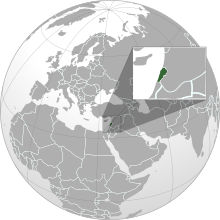
CIA activities in Lebanon refers to confirmed and alleged activities carried out in Lebanon by the Central Intelligence Agency (CIA).

CIA activities in Lebanon refers to confirmed and alleged activities carried out in Lebanon by the Central Intelligence Agency (CIA).
William Blum has claimed that the CIA financed the campaign of Camille Chamoun during the 1957 election. [1]
From 1962 to 1967, the CIA funded the Arabic magazine Hiwar under the cover of the Congress for Cultural Freedom. [2] Generous funding was provided by the CIA with the stipulation that it publish articles on the situation of Soviet Muslims. [3]
Tim Weiner has claimed that Christian leader Bashir Gemayel was the "CIA's most highly placed source in Lebanon" and that the CIA "had another national leader on their payroll". [4] The 1983 US embassy bombing in Beirut killed several 8 CIA agents and in 2023 the CIA called it the "deadliest day in CIA history". [5] The role of the CIA in the 1985 Beirut car bombings has been debated, with Bob Woodward claiming the attack was funded by the CIA and Saudi Arabia. [6] Ronald Reagan, Robert McFarlane, and William Casey's widow claimed that the CIA had no involvement. [6] [7] In the aftermath of the bombing, US officials cancelled its Beirut based counterterrorism operation, that trained Lebenese counterterrorism units, because of indirect links between the CIA and the bombing. [8]
In December 2011, Hezbollah chief Hassan Nasrallah released the names of 10 undercover CIA agents working in Lebanon during a televised address on al-Manar, claiming CIA agents conducted meetings at Pizza Hut and Starbucks franchises. [9] Nasrallah claimed the agents were using diplomatic cover. [10]
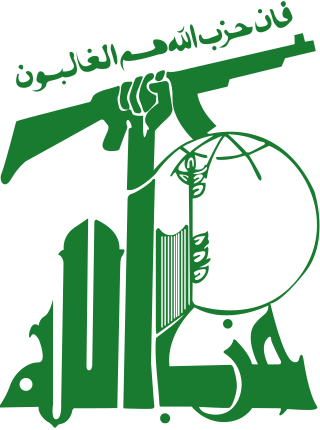
Hezbollah is a Lebanese Shia Islamist political party and paramilitary group. Hezbollah's paramilitary wing is the Jihad Council, and its political wing is the Loyalty to the Resistance Bloc party in the Lebanese Parliament. Its armed strength was assessed to be equivalent to that of a medium-sized army in 2016.

William Francis Buckley was a United States Army officer in the United States Army Special Forces, and a Central Intelligence Agency (CIA) station chief in Beirut from 1984 until his kidnapping and execution in 1985.
The Islamic Jihad Organization was a Lebanese Shia militia known for its activities in the 1980s during the Lebanese Civil War.

Imad Fayez Mughniyeh, also known by his nom de guerre al-Hajj Radwan, was a Lebanese militant leader who was the founding member of Lebanon's Islamic Jihad Organization and number two in Hezbollah's leadership. Information about Mughniyeh is limited, but he is believed to have been Hezbollah's chief of staff and understood to have overseen Hezbollah's military, intelligence, and security apparatuses. He was one of the main founders of Hezbollah in the 1980s, and was described as a skilled military tactician and highly elusive figure. He was often referred to as an ‘untraceable ghost’.
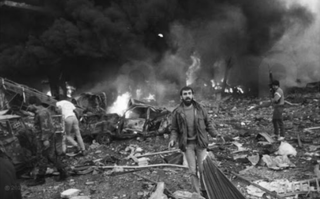
On 8 March 1985, a car bomb exploded between 9 and 45 metres from the house of Shia cleric Sayyed Mohammad Hussein Fadlallah in Beirut, Lebanon, in a failed assassination attempt by a Lebanese counter-terrorism unit linked to the Central Intelligence Agency. The bombing killed 80 people and injured 200, almost all civilians.

Grand Ayatollah Muhammad Husayn Fadlallah was a prominent Lebanese-Iraqi Twelver Shia cleric. Born in Najaf, Iraq, Fadlallah studied Islam in Najaf before moving to Lebanon in 1952. In the following decades, he gave many lectures, engaged in intense scholarship, wrote dozens of books, founded several Islamic religious schools, and established the Mabarrat Association. Through the aforementioned association, he established a public library, a women's cultural center, and a medical clinic.

The Central Intelligence Agency, known informally as the Agency, metonymously as Langley and historically as the Company, is a civilian foreign intelligence service of the federal government of the United States tasked with gathering, processing, and analyzing national security information from around the world, primarily through the use of human intelligence (HUMINT) and conducting covert action through its Directorate of Operations. The agency is headquartered in the George Bush Center for Intelligence in Langley, Virginia.

Dahieh is a predominantly Shia Muslim suburb in the south of Beirut, in the Baabda District of Lebanon. It has a minority of Sunni Muslims, Christians, and a Palestinian refugee camp with 20,000 inhabitants. It is a residential and commercial area with malls, stores and souks, and comprises several towns and municipalities, including Ghobeiry, Haret Hreik, Bourj el-Barajneh, Ouzai, and Hay El-Saloum. It is north of Rafic Hariri International Airport, and the M51 freeway that links Beirut to the airport passes through it.
Hezbollah originated within the Shiite block of Lebanese society. According to the CIA World Factbook estimate in 2022, Shiites comprise 31.2 percent of Lebanon's population, predominating in three areas of Lebanon: Southern Lebanon, Beirut and its environs (Dahieh), and the northern Beqaa valley region.

The April 18, 1983, United States Embassy bombing was a suicide bombing on the Embassy of the United States in Beirut, Lebanon, that killed 32 Lebanese, 17 Americans, and 14 visitors and passers-by. The victims were mostly embassy and CIA staff members, but also included several US soldiers and one U.S. Marine Security Guard. The attack came in the wake of an intervention in the Lebanese Civil War by the United States and other Western countries. The attacks were claimed by the Islamic Jihad Organization. The United States later believed they were perpetrated by Hezbollah, but Hezbollah denied responsibility.
The 2009 Hezbollah plot in Egypt involved the arrest of 49 men by Egyptian authorities in the five months preceding April 2009. Egypt accused them of being Hezbollah agents planning attacks against Israeli and Egyptian targets in the Sinai Peninsula. The arrests led to tensions between the Egyptian government and Hezbollah, as well as between Egypt and Iran.

Mustafa Badreddine was a Lebanese militant leader and both the cousin and brother-in-law of Imad Mughniyeh. He was nicknamed Dhu al-Fiqar referring to the legendary sword of Ali. His death was seen as one of the biggest blows in the Hezbollah leadership.
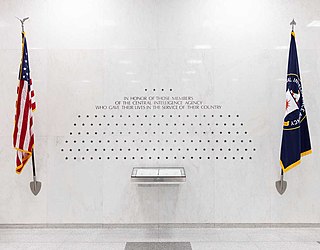
The United States Central Intelligence Agency (CIA) dates from September 18, 1947, when President Harry S. Truman signed the National Security Act of 1947 into law. A major impetus that has been cited over the years for the creation of the CIA was the unforeseen attack on Pearl Harbor, but whatever Pearl Harbor's role, at the close of World War II government circles identified a need for a group to coordinate government intelligence efforts, and the Federal Bureau of Investigation (FBI), the State Department, the War Department, and even the Post Office were all jockeying for that new power.

On 12 November 2015, two suicide bombers attacked Bourj el-Barajneh, a southern suburb of Beirut, Lebanon, that is inhabited mostly by Shia Muslims. Reports of the number of fatalities concluded that 43 people died directly from the detonation. Islamic State of Iraq and the Levant (ISIL) claimed responsibility for the attacks.
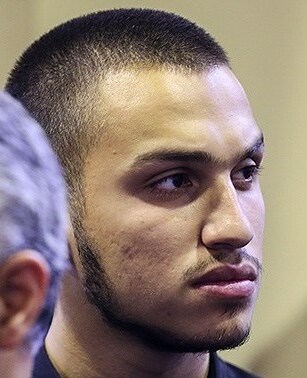
Jihad Mughniyah was a Lebanese politician and prominent member of the Lebanese Shia militant group Hezbollah, and the son of Imad Mughniyeh. He was killed in 2015 in the Mazraat Amal incident, an airstrike attributed to Israel.
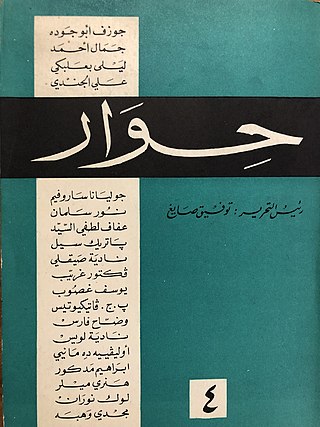
Hiwar was an Arabic magazine published in Beirut between 1962 and 1967. The magazine was established and financed by the CIA during the cultural Cold War, under the cover of a front organization, the Congress for Cultural Freedom.
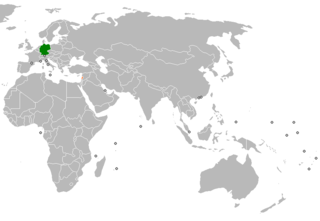
Germany–Lebanon relations are "traditionally friendly" and "very close", according to the German Foreign Office. For Lebanon, Germany is one of the most important donor countries for the care of the numerous refugees in the country. Among the Arabs in Germany, the Lebanese are among the largest groups with almost 160,000 members (2021).

The Islamic Republic of Iran is a key patron of the Lebanese Shia Islamist militia and political party Hezbollah.
The Central Intelligence Agency (CIA) is an agency of the federal government of the United States that has carried out numerous confirmed and alleged activities across the world since its founding in 1947.

Wafiq Safa is a Lebanese security official and a senior member of Hezbollah. As head of Hezbollah's Liaison and Coordination Unit since the late 1980s, reporting directly to the group's Secretary-General, Safa heads Hezbollah's security services and manages the group's relationships in Lebanese politics. He is sometimes referred to as the "Minister of Defense" or "Minister of the Interior" of Hezbollah.